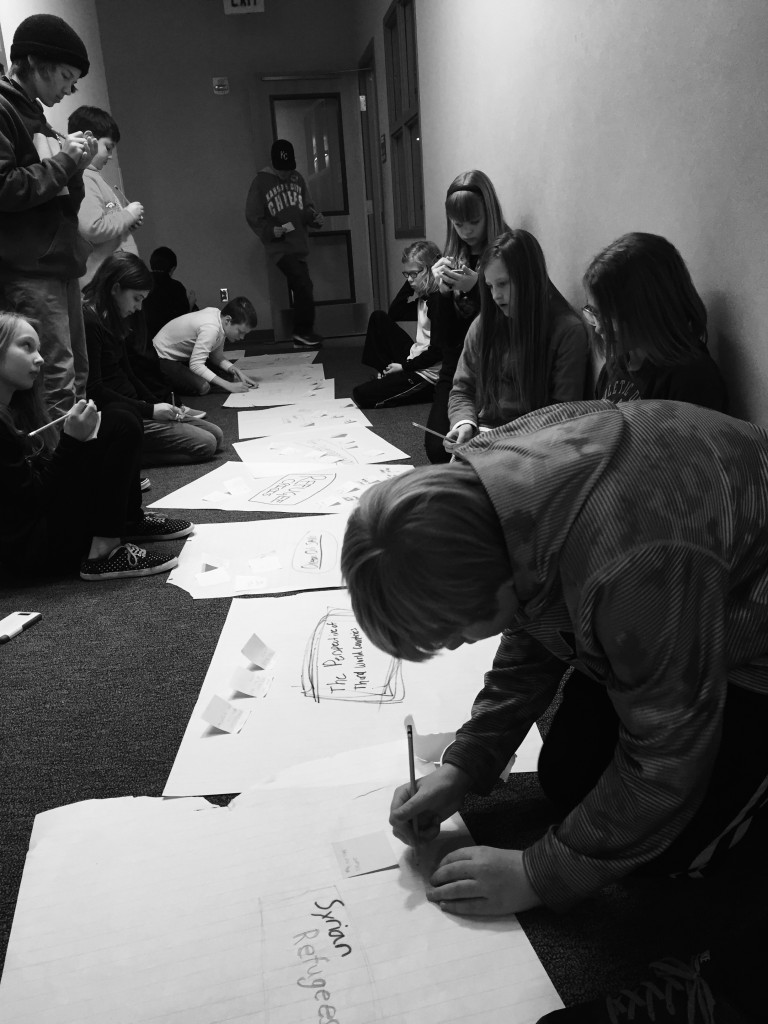Dear Families,
I want to continue to share ideas with you about what makes Sage Canyon different and what sets us apart from other elementary schools as a Project-Based Learning (PBL) school. In my last post, I shared with you some insights into why we choose to teach with a PBL approach and today, I’d like to share with you a critical part in this process: Critique & Revision.
We often speak of learning as a process, as are most things in life. There is much to be gained from taking the time to reflect on our progress throughout a project and allow for feedback from teachers and peers. Through the PBL process, students are asked to engage in meaningful work to be shared with an authentic audience. When students are connected to their work and passionate about what they are doing, they are far more invested in the quality of work that they produce. Meaningful and timely feedback from both teachers, peers, and community members plays an essential role in helping students produce a result they can be proud of and allows them to learn powerful lessons along the way.
Professor James Pennebaker from the University of Austin Texas quotes,
“When people are trying to learn new skills, they must get some information that tells them whether or not they are doing the right thing. Learning in the classroom is no exception. Both the mastery of content and, more importantly, the mastery of how to think require trial-and-error learning.”
Of course we want our students to master certain skills and feel confident in their achievements, but there is great value in understanding that learning and thinking is not a simple task, and there is much to be gained from making mistakes. The majority of growth occurs throughout a process of revision and refinement, when students learn to use feedback to improve their work. For example, in the 5th grade project, “Dr. Dr. Give me the News,” students collaborated with patients at National Jewish Hospital, developing a diagnosis and treatment plan to be shared with a panel of medical professionals. As students designed their presentations, they went through a series of mock rehearsals. Peers and teachers shared what they liked about their presentation so far and shared questions and ideas for improvements. In 6th grade, students are using a “Question Formulation Technique” with their peers to develop questions to drive their global issue research further. They are then using these questions to cultivate connections with stakeholders, gaining authentic feedback on their ideas and solutions for these issues. When students learn how to gain a critical understanding of something through the support of teachers and peers, and especially with an authentic audience, well, that makes the whole process more valuable.
Our students are constantly focused on how to collaborate and effectively communicate their ideas with peers. They work tirelessly to practice these essential skills through a variety of tiered and leveled feedback protocols and teacher support. We give ample time to practice and refine these skills so as to keep student work moving in a positive, forward direction. Students learn to give constructive, specific, and timely feedback, and more importantly, learn how to use this feedback to make changes to their work. They learn how to be resilient, to grow through the process and accept each others’ critique. They become committed to sharing ideas and producing products that have been strategically constructed through the mentor-ship of their peers and teachers. This process becomes an essential element to building a community of learners and growers. More important, students develop a keen awareness of their own progress and begin to seek the feedback of others so as to produce the best possible outcome.
Take care,
Mandy
